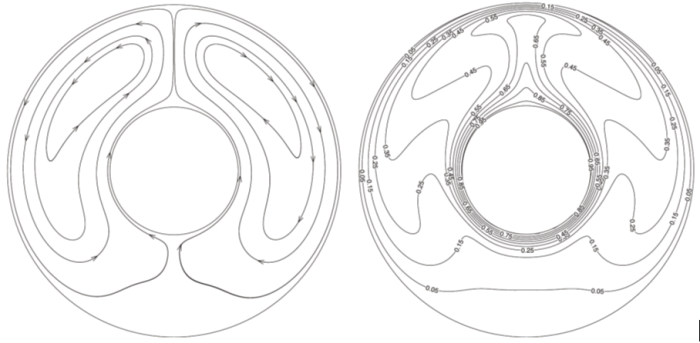Scientists Propose a Parallel Coupled Cell-Centered Finite Volume Thermal Lattice Boltzmann Method on Unstructured Grids
Date:11-08-2020 | 【Print】 【close】
The lattice Boltzmann method (LBM), which originated from lattice gas automata (LGA), has become an effective and attractive numerical scheme in computational fluid dynamics (CFD).
The conventional LBM couples the grid of the computational domain to a uniform Cartesian grid and the discrete velocities, having a simple form and achieving second-order accuracy in space. However, the conventional LBM cannot well capture the curved boundaries due to its uniform grid structure. It has to generate numerous grids to resolve the physical mechanisms.
To overcome this limitation, Researchers from the Shenzhen Institutes of Advanced Technology (SIAT) of the Chinese Academy of Sciences adopted finite volume (FV)-LBM to simulate the thermal incompressible flow on unstructured grids, proposed a parallel coupled cell-centered FV thermal lattice Boltzmann method, which has the potential to simulate flows in complicated domains.
This study was published in International Journal of Heat and Mass Transfer.
To simulate thermal flow, a double distribution function (DDF) LBM for thermal flows was employed. In addition to particle distribution functions (PDFs), the model includes temperature distribution functions, which were applied to simulate the temperature field.
The FV method was employed to discretize the DDF temperature LBM (TLBM) with the D2Q9 discrete velocity model and the Bhatnagar-Gross-Krook (BGK) collision model to simulate convective flows on unstructured grids. To simulate a large-scale complex flow field and reduce the computational time, a parallel algorithm for the FV-TLBM on unstructured grids was devised.
The results obtained from FV-TLBM agreed well with previous studies. The performance analysis of parallel numerical experiments showed that the parallel algorithm has considerable scalability and that the efficiency could be as high as 96.79% on 6000 processes.
For the next step, the team will devote to simulate thermal convective flows with complicated boundary in the future.

Simulation results of natural convection in a concentric annulus at Ra=5×104, streamlines (left), temperature contours (right). (Image by SIAT)
Media Contact:
ZHANG Xiaomin
Email: xm.zhang@siat.ac.cn